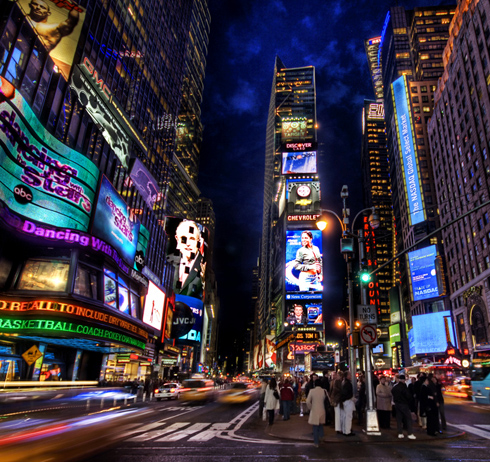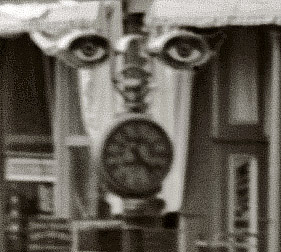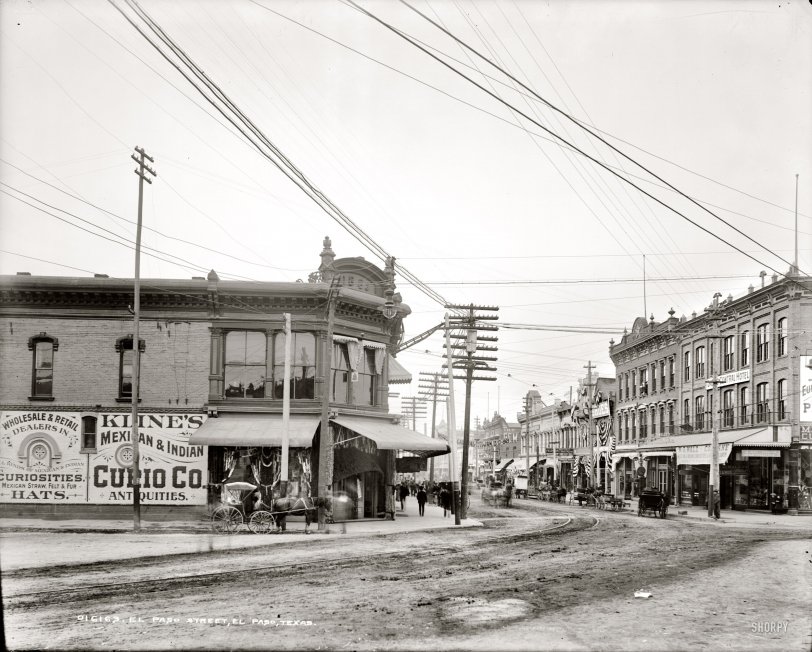


Framed or unframed, desk size to sofa size, printed by us in Arizona and Alabama since 2007. Explore now.
Shorpy is funded by you. Patreon contributors get an ad-free experience.
Learn more.

- Baldwin 62303
- Baldwin VO-1000
- Cold
- No expense spared
- Tough Guys
- Lost in Toyland
- And without gloves
- If I were a blindfolded time traveler
- Smoke Consumer Also Cooks
- Oh that stove!
- Possibly still there?
- What?!?
- $100 Reward
- Freeze Frame
- Texas Flyer wanted
- Just a Year Too Soon
- WWII -- Replacing men with women at the railroad crossing.
- Yes, Icing
- You kids drive me nuts!
- NOT An Easy Job
- I wonder
- Just add window boxes
- Icing Platform?
- Indiana Harbor Belt abides
- Freezing haze
- Corrections (for those who care)
- C&NW at Nelson
- Fallen Flags
- A dangerous job made worse
- Water Stop
Print Emporium
El Paso: 1903
1886 Map
Thanks Vic for the map. I see those railroads via El Paso. My great-great grandpa went to El Paso from Ohio in 1870's to work on the railroad for few years. I make the connection with family history, personal letters with this map. Thanks so much.
Making it work
The sign painters have also effectively worked the decorative brickwork and windows into their design. It is hard to say if the people who originally designed and built the structure on the left had any aesthetic compunction about using the walls as a billboard - or was this the work of later owners? Imagine spending $50 million to build an office building today and then using it for advertising space.
[It is hard to envision. - Dave]

CURIOUS
MIGHT THAT BE A SIGN FOR AN OPTOMETRIST?
[I BET IT WAS. ARE YOU HARD OF SEEING? - DAVE]
Coincidence
Having just watched the HBO series Deadwood last night, I smiled when I saw "The Gem" and "Billiards" on the same building down the street. Must have been a common name in those days.
J.W. Hardin
The outlaw J.W. Hardin was killed here 8 yrs prior to the photo. I'd say it was a rather hectic town at the time.
S. El Paso Street
This same photo (and 112 others from Detroit Publishing, some already seen here on Shorpy) is contained in the Dover Publications collection "Main Street, U.S.A. In Early Photographs" (1998).
The book's caption notes this is South El Paso Street's 100 block, looking to the south. At the time the photo was taken, this area was the business center of El Paso, "although that hegemony slipped away in the subsequent decade." The two buildings at the extreme right were torn down in the 1980's for the exppansion of the Paso del Norte Hotel.
Believe me, Dave has managed to bring up a great amount of detail from the mud of the original photograph (and I ain't talking about the street.)
Steve Miller
Someplace near the crossroads of America
Electric streetcars
Looking at the streetcar system I don't see any overhead catenary system, but I am viewing the image on a google phone so the detail might not be as clear. In most cities where I have researched, primarily in the southeast, the electric distribution was handled by the streetcar companies as a secondary service to sell excess power not used in the primary transportation network. Streetcars were animal powered until electric motors were improved to handle the cars; steam powered trolleys were considered undesirable and banned in the franchise agreements needed to operate. In some cities the power was generated by the local mill since they had the hydro power, others it was a municipal system or local business group. Lighting was primarily gas until the late 1890's. The electric system is present with a transformer and service cut-ins but I was curious to know if the streetcar was still animal powered?
[The photo shows an overhead catenary line. - Dave]
Period Signage, Signage Periods
The use of periods in 19th-century signage seems to derive from the similar usage on book title pages. The typographic fashion for long phrases and numerous ornamental typefaces on the same page or sign was perhaps thought to be more confusing to the reader without the periods. So in the present photo, the periods help us to sort out the discrete phrases in the "wordy" sign at the far left: "Wholesale & Retail Dealers in All Kinds of Mexican & Indian Curiosities. Mexican Straw, Felt & Fur Hats." As page and signage design simplified in the 20th Century, the perceived need for the periods became redundant and was dropped from designers' and editors' style sheets. The use of a period in single-word signs such as "Office." or "Coalyard." also renders the word into a declarative sentence, as if spoken in an announcement to the viewer. My favorite badly painted 20th-century building sign, with too-evenly spaced block letters, would have benefited from the addition of periods, or at least better spacing. As seen from the road in Beirut in 1973, it read as one word: "GARGANTUADANCINGCREPERIERESTAURANT"
Sign Punctuation and the Future of Shorpy
Years from now, Shorpy.com (or its successors) may generate comments on the ersatz punctuation evident in commercial signage circa 2009. An infamous example is the use of apostrophies to indicate plurals (e.g. "soda's").
Sign punctuation
Something I've always been curious about - this is the first example I've seen on Shorpy since I signed up.
From the pre-Civil War era up through about the turn of the 19th-20th century, sentence fragments on billboards are always followed by periods.
See "Antiquities." in this photo for an example. A nineteenth century hardware store might advertise:
Tools.
Wire Fencing.
Lumber.
Nails and Staples.
You see it in newspaper ads of the 1800's as well.
By the 1920's this usage is just about extinct, you never see it today unless intended to create a mock-dramatic effect.
Somehow there must have been a change in the teaching of business English that caused every ad agency in America to decide "this usage must go!"
[Check out this post, and the comments. - Dave]
Out in the West Texas...
Town of El Paso, I fell in love with a Mexican girl...
Night time would find me at Rosie's Cantina...etc...
Mama was a cowgirl
My mother was born in El Paso in 1918 and I imagine it looked pretty much the same 15 years after this photo was taken.
Oregon and Mills
Based on the address of the old Grand Central Hotel and the bend in the streetcar line, this appears to be taken from the corner of Oregon and Mills (formerly St. Louis), looking almost due west. Just to the right of the photographer would be San Jacinto Plaza. 1886 map.
[The label in the lower left corner of the photo says it's El Paso Street. - Dave]
El Paso Grand Midwinter Carnival
The El Paso Midwinter Carnival will take place from January 12 to 17 Inclusive, some of the features of which will be: World's championship Miners' Drilling Contest, prizes $2000; Roping and Tying Tournament, prizes $2000: Fraternal and Civic Parade, prizes $1000: free shows on the streets. Oriental midway, music, parades, bull fights, confetti battles and generally a hot old time.
Ammunition can be bought on the grounds. Programmes of the El Paso Grand Midwinter Carnival shoot will be mailed on application. -- Sporting Life
Great Picture
Lots to see here. But I keep coming back to the 2nd store from the right. Just beyond the W.G.Walz banner. Does anyone else see two eyes looking at the lens?

Telephone cables
What a remarkable chapter in the history of telephone communications this photo displays.
Notice how the lower six crossarms on the closest telephone pole, which used to hold 36 wire pairs, have been rendered obsolete by the three cables strung in the upper foreground of the photo.
I'd guess that those cables hold 25 pairs apiece, but they could be a hundred pairs each. Nowadays there can be up to two thousand pairs in a cable.
This marked a glorious transition for a forest of wires to a telephone system with some hope for future expansion.
Date
Does the overhead banner not say 1889?
[1903. - Dave]
What else was going on in 1903.
When I see the date on a picture or when a Hymn was written I try to relate the date as to what else was going on in the world. El Paso in 1903 with no cars was to change because in Detroit Henry Ford was starting the Ford Motor Co. Driving through El Paso today on I-10 you do not see much of El Paso because of all the cars you have to keep your eyes on.

























On Shorpy:
Today’s Top 5